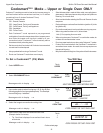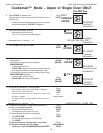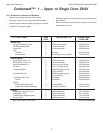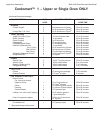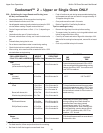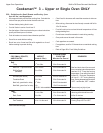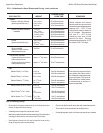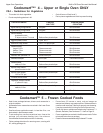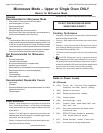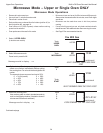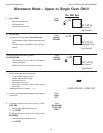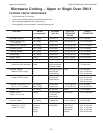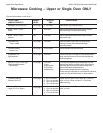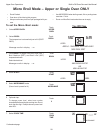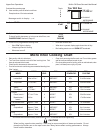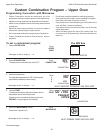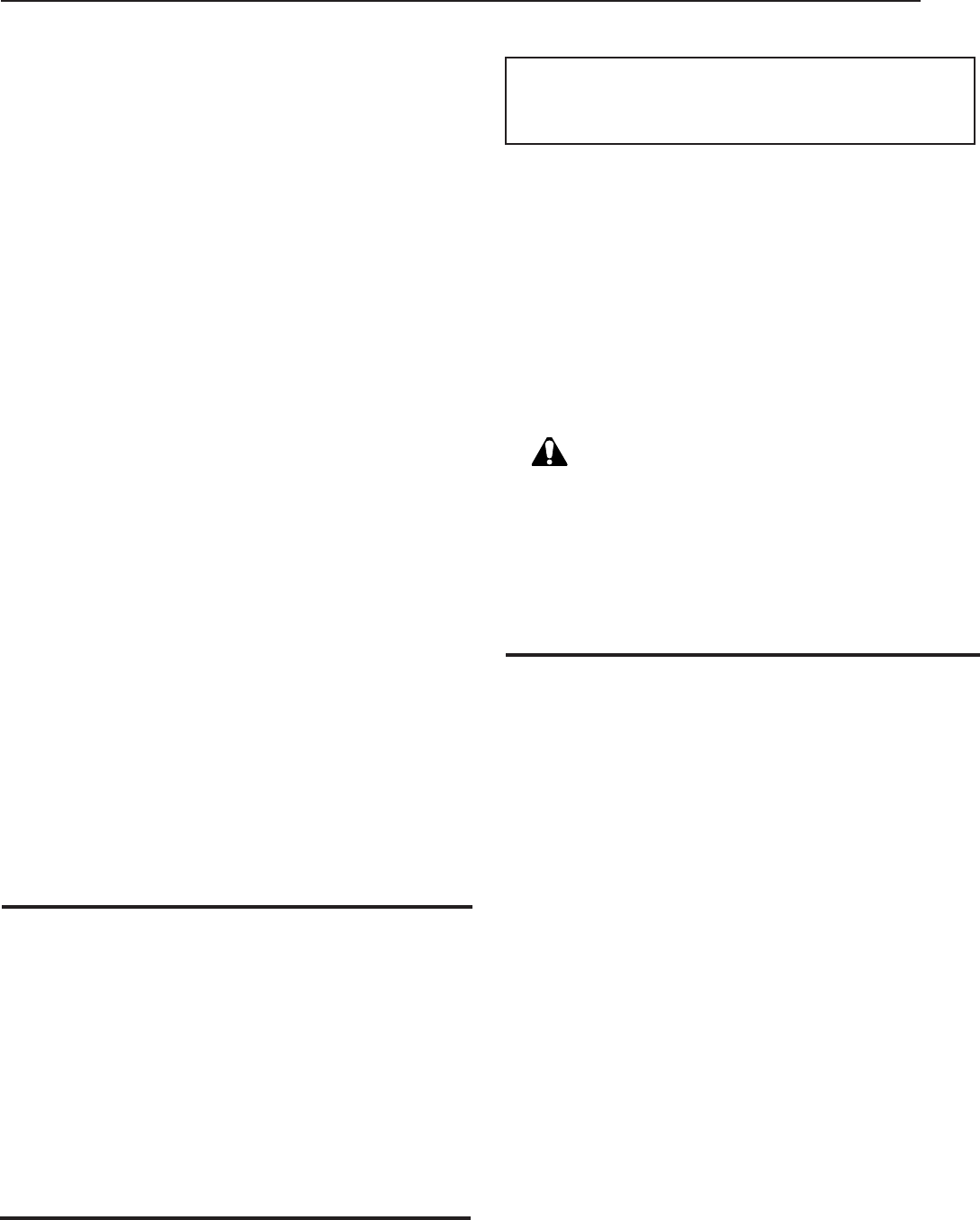
Built-in DM Oven Care and Use Manual
23
Food Selection
• Quantity – Larger food items will cook faster than smaller food
items. A small amount of food, i.e. 4 Tbsp. butter, will take longer
to heat because the oven cavity is large compared to the small
amount of food.
• Content – Food with higher fat, sugar and liquid contents cook
faster than those with lower contents. For example, eggs, cheese,
mayonnaise, etc. cook very quickly.
• Density – A nonporous food, such as roast, takes longer to cook
than a porous food such as bread.
(continued next column)
Utensils
Recommended for Microwave Mode
• Glass ceramic (Pyroceram
®
)
such as Corningware
®
• Heat-resistant glass (i.e. Pyrex
®
)
• Microwave-safe plastics
• Paper plates and cups
• Microwave-safe pottery, stoneware, porcelain
• Most Dinner Plates (check manufacturer's recommendations or
perform microwave-safe test (See "Tips" below).
Tips
• To check whether a dish or mug is safe to use in this mode, place
empty cookware in the oven next to a glass measuring cup with 1 cup
of water in it. Heat at 100% power for 1 minute. If the empty cookware
is warm at this point, it should not be used with the microwave mode.
• Microwave energy may cause some arcing between metal objects.
Small amounts of arcing are neither harmful nor hazardous.
Not Recommended for Microwave
Mode
• Non-heat-resistant glass
• Food carton with metal handle
• Non-microwaveable plastics (i.e. margarine tubs)
• Styrofoam cups or containers
• Metal or plastic (non-microwaveable) commuter beverage container
• Recycled paper products (i.e. brown shopping bags)
• Metal twist ties
• Food storage bags
• Some plastic wraps (check label)
Recommended Disposable Covers
• Paper towels
• Wax paper
• Microwave-safe plastic wraps (vent so steam escapes). Do not allow
plastic wrap to touch food.
• Parchment paper.
Microwave Mode – Upper or Single Oven ONLY
Basics for Microwave Mode
Cooking Techniques
• Arranging – Place food in a circular pattern with the thickest
areas toward the outside of dish.
• Covering – Most foods cook and reheat more evenly when
covered.
• Shielding – Cover thinner areas of food with foil to prevent
over-cooking or defrosting too quickly, i.e. chicken drumsticks.
Do not wrap baking potatoes in foil.
• Foil should not come closer than one inch to any surface of the
oven.
• CAUTION: Stirring and Turning – Liquids can become
super heated beyond boiling when heated in the microwave.
Stir liquids before and after heating to help prevent “eruption”
because of overheating. Stir foods from the outer edges toward
center of utensil or turn food over once during cooking.
• Standing Time – Allow food to stand to complete cooking.
Guide to Power Levels
HI = 600 watts
HI (100%) Poultry, fish, fresh and frozen vegetables,
casseroles, boil water, popcorn, pudding.
9 ( 90%) Reheat rice and pasta.
8 ( 80%) Reheat precooked food, seafood.
7 ( 70%) Cheese entrees.
6 ( 60%) Scrambled eggs, cakes.
5 (50%) Custards, pasta, tender meats: beef, ham,
lamb, pork, veal.
4 (40%) Slow cook entrees and less tender meats
covered with liquid.
3 (30%) DEFROST frozen uncooked or precooked
food, simmer stews and sauces.
2 (20%) Reheat pancakes, tortillas, French toast.
1 (10%) Hold entrees at serving temperatures.
Upper Oven Operations
DO NOT RUN MICROWAVE MODE
WHEN OVEN IS EMPTY
• Shape and Size – Uniform shapes and sizes cook more evenly.



